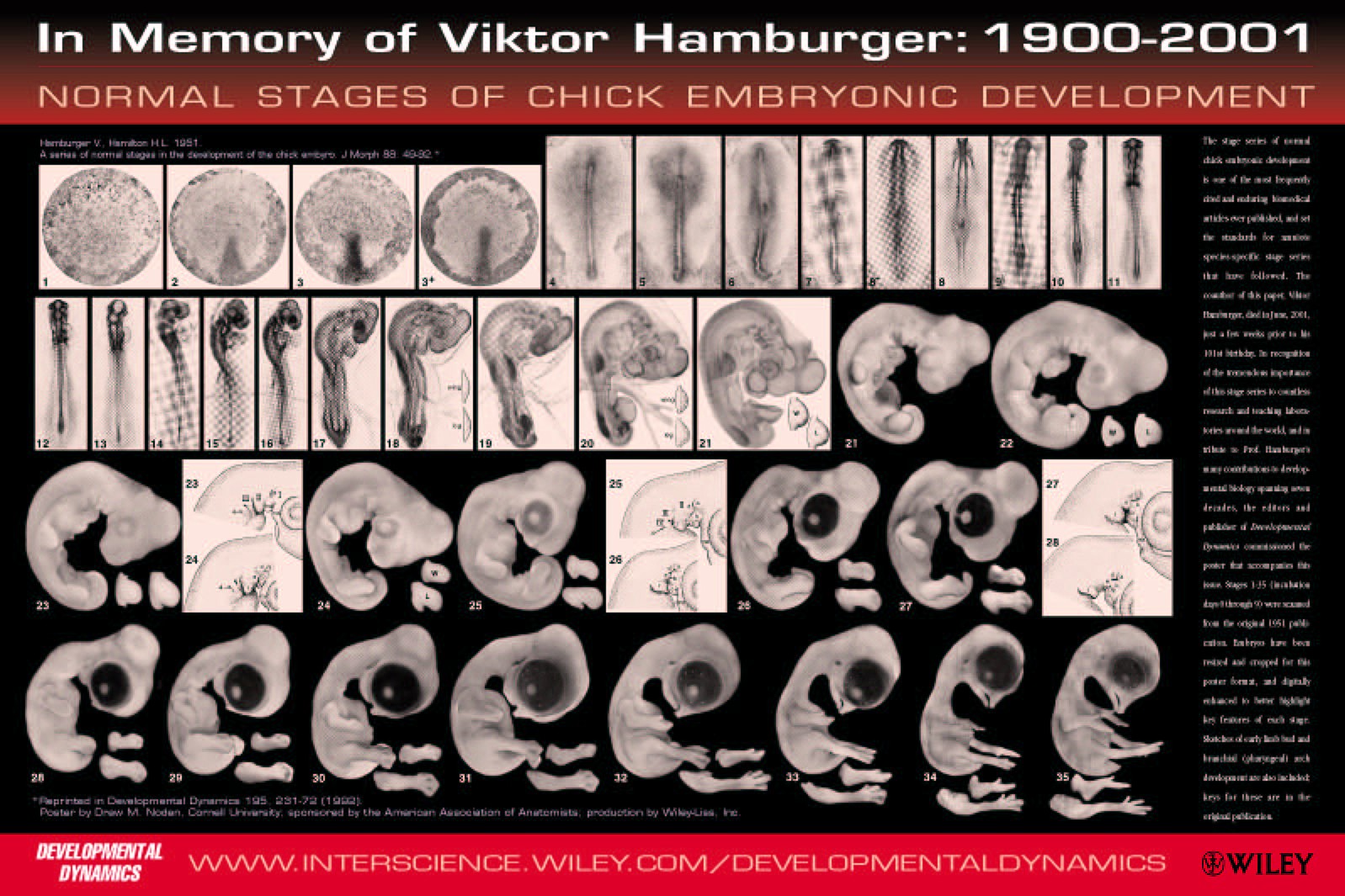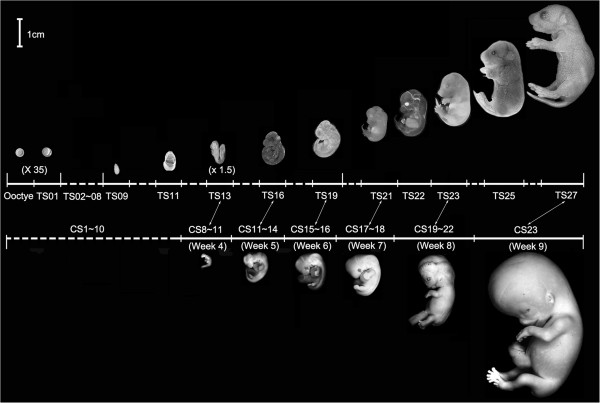|
|
| Line 1: |
Line 1: |
| ==Individual Assessment Lab 9== | | ==Organogenesis Lab== |
|
| |
|
| ===Peer Assessment=== | | == 1. QUIZ == |
| * This will form part of your individual assessment for the course.
| |
| * Each student should now look at each of the other Group projects in the class.
| |
| * Next prepare a critical assessment (should include both positive and negative issues) of each project using the project group assessment criteria.
| |
| * This assessment should be pasted without signature on the top of the specific project's discussion page. (minimum length 3-5 paragraphs/project)
| |
| * This critical assessment should also be pasted on your own student page.
| |
| * Each student should therefore have 5 separate reports pasted on their own page for this assessment item.
| |
| * Length, quality and accuracy of your reports will be part of the overall mark for this assessment.
| |
| ** there will be a greater loading on this than simple question assessments.
| |
|
| |
|
|
| |
|
| {| class="wikitable mw-collapsible mw-collapsed"
| | == 2. Organogenesis Lab == |
| ! Group Assessment Criteria
| | In this lab you will dissect fertile chicken eggs and study fixed mouse embryos up to mid-gestation using dissection microscopes. You will name the embryonic anatomical structures, and describe what these will give rise to. |
| |-
| |
| | [[File:Mark_Hill.jpg|50px]]
| |
| # The key points relating to the topic that your group allocated are clearly described.
| |
| # The choice of content, headings and sub-headings, diagrams, tables, graphs show a good understanding of the topic area.
| |
| # Content is correctly cited and referenced.
| |
| # The wiki has an element of teaching at a peer level using the student's own innovative diagrams, tables or figures and/or using interesting examples or explanations.
| |
| # Evidence of significant research relating to basic and applied sciences that goes beyond the formal teaching activities.
| |
| # Relates the topic and content of the Wiki entry to learning aims of embryology.
| |
| # Clearly reflects on editing/feedback from group peers and articulates how the Wiki could be improved (or not) based on peer comments/feedback. Demonstrates an ability to review own work when criticised in an open edited wiki format. Reflects on what was learned from the process of editing a peer's wiki.
| |
| # Evaluates own performance and that of group peers to give a rounded summary of this wiki process in terms of group effort and achievement.
| |
| # The content of the wiki should demonstrate to the reader that your group has researched adequately on this topic and covered the key areas necessary to inform your peers in their learning.
| |
| # Develops and edits the wiki entries in accordance with the above guidelines.
| |
| |}
| |
|
| |
|
| ==Stem Cell Paper Preparation for Lab 10==
| |
|
| |
|
| As part of the assessment for this course, you will give a 15 minutes journal club presentation in the next lab. For this you will in your current student group discuss a recent (published after 2011) original research article (not a review!) on stem cell biology or technology.
| | [[File:Chicken_Embryo_Hamburger_stages.jpg]] |
|
| | These are the Hamburger stages of chicken development |
| Please note that the best articles are found in journals with the highest impact factors: Nature, Science, Cell, Cell Stem Cell, etc). Please contact Annemiek in case you are at a loss, and she will help you find one.
| |
|
| |
|
|
| | More about chicken embryogenesis: https://embryology.med.unsw.edu.au/embryology/index.php/Chicken_Development |
| During the presentation it works best if one student discusses the introduction, the second the results section, and the third the discussion section. Please note that one slide takes about 1 minute to talk through. So do not use more than 15 to 20 slides total. Please read through attached document for tips for how to prepare a good presentation.
| |
|
| |
| You will receive a group mark based on presentation content, insight and comprehension, and presentation and slide style.
| |
|
| |
|
| ===Presentation Hints for Students ===
| | [[File:Mouse_vs_Human_embryogenesis.jpg]] |
| | This figure compares the human and mouse developmental stages |
|
| |
|
| * Do not use cheat sheets and do not learn your presentation literally by heart. '''Make sure that you know and understand what you want to get across.''' Explain carefully. Use your slides as cheat sheets. Make eye contact with your audience and get a feel for whether they understand your story.
| | More about Mouse embryogenesis: https://embryology.med.unsw.edu.au/embryology/index.php/Mouse_Timeline_Detailed |
| * '''Keep your presentation short and concise.''' Not every detail of the article needs to be discussed in the presentation, but limit it to the bare minimum that is required to get the main message of the article across. For instance, do not go into too much detail in method sections. Not all nitty-gritty detail of the results needs to be discussed. The less info your audience has to take in, the higher the chance that they will understand your story.
| |
| * Don’t just put your slides up while you are presenting, but talk your audience carefully through them. Slides are an indispensable part of the presentation. '''Each item on your slides should be relevant and addressed and highlighted with pointer, fingers, stick.''' Slide shows are indispensable for a presentation, as is the presenter. They should support and enhance a presentation, they should aid your audience in understanding.
| |
| * '''Talk your audience through each of the figures on your slides.''' Figures may be obvious to you, but not to your audience unless you explain them carefully. So explain what experiment has been carried out, and what is displayed in the figure:
| |
| ** on the X and Y-axes
| |
| ** what the bars represent in diagrams
| |
| ** the tissues/cell types displayed
| |
| ** the bands on Western blot, RNA and DNA gels,
| |
| ** What colors represent colors in immunostainings, etc etc.
| |
| * Please note that you only need to highlight this experimental detail that is necessary to get the main message of the figure across.
| |
| * Conclude a (results) slide with a concluding/summarizing remark that should cover the main message of this particular slide.
| |
| * Annotate the figures in your presentation carefully but sparingly. Label panels, axes, images etc so that figures are self-explicatory.
| |
| * Do not use too much text on your slides.
| |
| * To stay in control the presenter should flick through the slide show. Not another member of the team.
| |
| * If you didn’t understand the articles in depth, read a recent review or even go back to text books to acquire the basic knowledge. Also, if you discuss results of a crucial experiment but do not understand the technology. Please go back to the original references or your text books to read up on this technology. You should be on top of everything you say or write up in your slides.
| |
| * '''Stick to your time.''' Don’t make too many slides. Each slide should take about a minute on average to talk through. Try to avoid acronyms and abbreviation.
| |
| | |
| ==References==
| |
| | |
| <references/>
| |
 These are the Hamburger stages of chicken development
These are the Hamburger stages of chicken development
 This figure compares the human and mouse developmental stages
This figure compares the human and mouse developmental stages